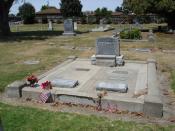As its short, simple sentences and heavily symbolic moral overtones make evident, "The Pearl" is based on the form of biblical parable, and the simple natural beauty of the opening scene recalls the beauty and innocence of the Garden of Eden before Adam and Eve's fall. Though the comparison is not made explicitly, it is nevertheless an apt one--like Adam and Eve, Kino and Juana make choices later in the story that cause them to lose their innocence and force them to leave their paradise for the hardships of the wider world. The cluster of brush houses by the sea where Kino and Juana live functions as a kind of paradise, in which man and woman live together in a state of nature. Steinbeck focuses on the family's rustic simplicity and on its reverence for a higher power. Steinbeck uses repetitious language, which evokes the Bible and other religious literature, to underscore the family's spirituality.
This scriptural structure is especially evident in Steinbeck's frequent use of the word "and" to drive the narrative: "And a goat came near and sniffed at him"; "And the rhythm of the family song was the grinding stone"; "And he drank a little pulque and that was breakfast."
Kino's knowledge of the world is not expansive, but his store of traditional songs and his contented, familiar manner of surveying his meager territory show that he is intimately acquainted with every aspect of the existence he knows. Kino frequently hears traditional songs in his head that express his mood or his sense of his environment--when he is content at home in this chapter, he hears the soothing rhythms of the Song of the Family, for instance, but when he is in trouble later in the novella he hears the alarming Song of Danger. Kino's inner...


